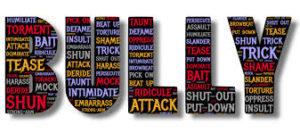What exactly do you expect from a high performing team?
A high performing team exceeds the goals you set. They work hard and smart as a group, not as individuals, and they enjoy working together. Most teams never reach the high-performing stage. That is the reason they are so special when you finally achieve this feat. You can help a team reach a high-performing state through a number of basic steps.
-
Plan What the Team Will Look Like
Before you recruit your first person, document what your team has to achieve and the date by which it should be completed. This can be done through a project charter or another document that details what the team will achieve together. It is important to offer your team a common understanding of their purpose and expectations.
However, don’t stop there. Think about the team culture you want to build, the dynamics of your team, and how they should work together. Define all you want from your team in a team charter.
-
Add the Right People
Building the right team is harder than it looks. It’s easy to recruit the wrong person, and it’s even easier to build a team that doesn’t perform well. Often you cannot pick and choose each team member. When you can, choose candidates who fit the job description aligned with good interpersonal skills. Bring in people who get along well with others. I have never seen a high-performing team made up of people who want to work by themselves.
-
Create a Team Culture
If you’ve hired like-minded people, begin by having them work together on specific tasks. Put them in pairs, but constantly switch the people in the pairs, so they get to know others in the team. Strengthen the relationship between the team and your customers. Find opportunities for the team to socialize together. High-performing teams share a common team culture, a feat that must occur as soon as possible.
-
Motivate the Team – and Yourself
A happy, motivated team always out-performs an unhappy, unmotivated one. It starts with you. Are you happy and motivated? Your motivation rubs off on your team. If you are motivated, focus on motivating your team. Use team building and group rallying exercises to get them pumped up. Tell them how proud you are to work with them. Help them understand why the goals are important and how every team member contributes to them.
Recognize Accomplishments
People respond positively to positive behavior. So you need to constantly recognize achievement when it’s due. Tell the team about an individual’s success. Make them feel proud. Spread the love—don’t focus on one team or person too frequently.
If you plan for success, you’ll recruit a great team, build a positive culture, motivate the team, and recognize achievement. Consequently, you’ll build a healthy project team and boost your chances of success!
P.S. If you find this newsletter helpful, please consider sharing it with your friends, family, and colleagues. If you need assistance, call 940-228-0550.




